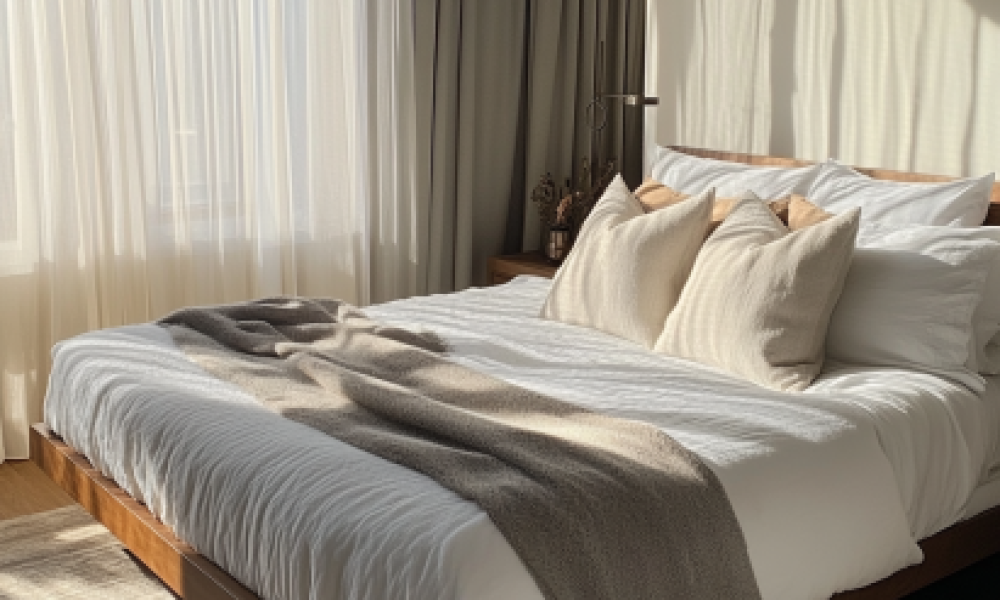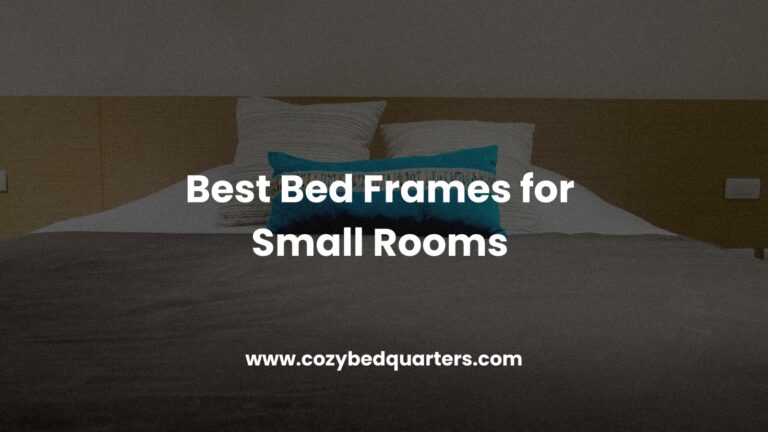7 Signs It’s Time to Replace Your Bed Frame
Wondering if it’s time to replace your bed frame? From squeaks to sagging, here are the top signs your frame is past its prime—and how to choose one that keeps you supported and squeak-free.
Waking up to a creak every time you turn over? You’re not the only one. A noisy bed frame might seem harmless at first, but it could be your sleep’s way of waving a red flag. From sagging slats to wobbling legs, these are the signals it’s time to upgrade your foundation—plus the specs to look for in your next frame so you can sleep soundly again.
Key Takeaways: When to Replace Your Bed Frame
- Sustained squeaks, cracks, rust, or wobble are early warnings to replace your bed frame.
- Mismatched foundations can void warranties and speed up mattress wear.
- Correct slat spacing (≤3″) and a center rail for queen+ reduce noise and sag.
- Upgrading the frame can improve alignment, cut motion transfer, and refresh your style.
- Choose quality joinery, smart hardware, and easy-tighten designs for long-term quiet.

1. That Never-Ending Squeak
Quick answer: If your bed narrates every move, it’s time for a fix—or a swap.
Quick fixes that actually help
Tighten all fasteners, add felt or nylon washers at metal contact points, and check where slats meet side rails. A dab of food-grade silicone on squeaky joints can quiet friction.
When to replace your bed frame
If the noise returns within days, joints or rails are likely fatigued. Upgrade to a design with stronger joinery, cross-bracing, and center support. For temporary relief, see our guide: How to Stop a Metal Bed Frame from Squeaking.
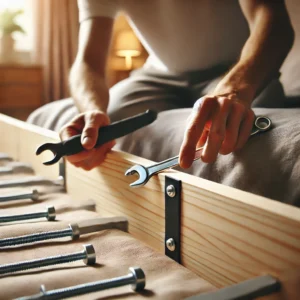
2. Cracks, Splits, and Warps—Oh My
Quick answer: Structural damage compromises safety and sleep—swap it out.
What to check
Wooden rails can split along the grain, and metal frames can bow or twist. Even hairline cracks widen under nightly load. Warped slats create uneven pressure points that shorten mattress life.
Replace vs. repair
If you can see daylight through a split, rails won’t sit flush, or bolt holes are stripped, retire the frame. Temporary fixes rarely last because the material itself is fatigued.
3. Your Bed Feels Like a Hammock
Quick answer: Dips and rolling to the middle = failing support.
Why it happens
When a frame can’t distribute weight evenly, you get sagging—especially at the center. Slats spaced too far apart (beyond 3 inches) or a missing center support on queen and larger sizes are common causes.
How to fix it for good
If rotating the mattress doesn’t help, your foundation is likely the culprit. Choose a frame with tighter slat spacing and a continuous center rail with legs. It’s often the smarter move than piecemeal repairs.
4. Your Frame Doesn’t Fit Your Mattress
Quick answer: Mismatch = noise, sag, and premature wear.
Fit & compatibility
Today’s mattresses are specific about support. Many foam and hybrid models require certain slat spacing; others prefer a solid platform. A mismatch leads to squeaks, edge collapse, and early impressions.
Smart sizing for your space
If your mattress slides inside the frame or slats flex easily, pick a model designed for your mattress type. In tight rooms, consider a low-profile platform to open visual space—or a taller frame for storage. See our guide to best bed frames for small bedrooms.
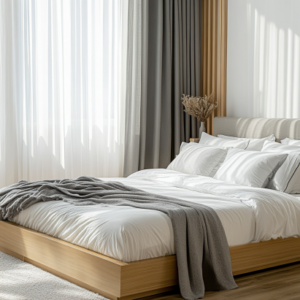
5. Rust Is Taking Over
Quick answer: Surface spots can be treated—structural corrosion can’t.
Spot the warning signs
Oxidation weakens joints and hardware, especially in humid climates. Light rust might sand away, but if you see flaking metal, deep pitting, or seized bolts, integrity is compromised.
Prevention & maintenance
Keep humidity in check, add protective washers at rub points, and vacuum slats quarterly. For a step-by-step tune-up, see How to Maintain Your Bed Frame for Longevity.
6. It Shifts Every Time You Do
Quick answer: If the frame scoots or wobbles, construction or assembly is lacking.
What’s going wrong
Beds that skate over the floor or wobble when you sit often lack cross-bracing or a sturdy center rail. Over-tightening to compensate can strip hardware and make things worse.
The stable upgrade
A bed should feel inert—no sway, no rattle. Look for corner blocks, locking slat systems, or metal cross-braces. If movement persists after a tune-up, it’s time to upgrade your bed base.
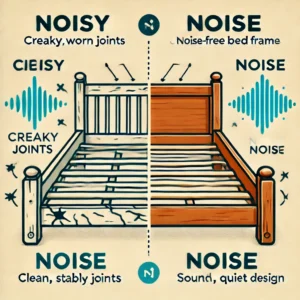
7. A Style (or Size) Upgrade
Quick answer: Your taste evolved—your bed can too.
Form meets function
Sometimes the best reason to switch frames is simple: you want a new look or more space. Moving from full to queen, or queen to king? Upgrading ensures proper center support and avoids warranty issues with many mattresses.
Instant vibe shift
If you’re craving a calmer bedroom, a minimalist platform or upholstered headboard can transform the feel with less noise and better support.
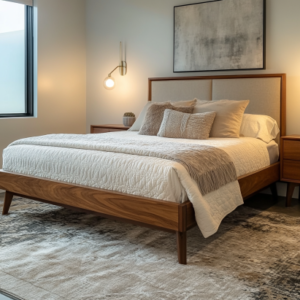
How to Choose Your Next Bed Frame
Answer first: Focus on support specs, build quality, and the noise-prevention details that matter night after night.
- Support & slats: For most foam/hybrid mattresses, look for slats ≤3″ apart and a continuous center rail with legs for queen+ sizes. Many warranties require this.
- Materials: Solid hardwood and steel tend to be most durable. Engineered wood is fine when thick, well-laminated, and properly braced.
- Joinery & hardware: Metal cross-braces, corner blocks, locking slat caps, and threaded inserts help prevent loosening. Avoid thin sheet-metal brackets that flex.
- Noise control: Felt/nylon washers at contact points, slat holders that prevent rub, and anti-skid feet keep the “new bed hush.”
- Weight capacity: Add up sleepers + mattress + bedding. Choose a frame with a comfortable margin (e.g., 800–1,000 lb capacity for queen+).
- Height & storage: Need under-bed bins? Aim for 12–14″ clearance. Prefer a lower profile? 8–10″ looks sleek and keeps pets from diving under.
- Assembly & moves: Tool-free or captured-bolt designs reduce future squeaks. Clear, labeled parts help if you relocate.
- Room fit & scale: In tight rooms, slim legs and light headboards feel airier. See best bed frames for small bedrooms for size-smart picks.
- Maintenance: A quick quarterly check—tighten hardware, vacuum slats—extends life. Our guide to maintaining your bed frame walks you through it.
- Budget tiers: Value: powder-coated steel platforms with center legs; Mid: solid wood rails + locking slats; Premium: hardwood + metal sub-structure, upholstered headboard, soft-close storage.
On the fence—repair or replace? Add up your time, tools, and the cost of sturdy replacement parts. When repairs creep near half the price of a well-built model, it’s smarter to make the switch and reset the clock on comfort.
Key Takeaways
- Squeaks, cracks, rust, and wobble are early warnings to upgrade your frame.
- Mismatched foundations can void warranties and speed up mattress wear.
- Correct slat spacing and a center rail dramatically reduce noise and sag.
- A new frame can improve alignment, cut motion transfer, and refresh your style.
- Choose quality joinery, smart hardware, and easy-tighten designs for long-term quiet.
FAQ
- How do I know when to replace my bed frame?
- If your bed frame squeaks, sags, shifts, or shows cracks, warps, or rust, it’s time to upgrade.
- Does a new bed frame improve sleep quality?
- Yes—a sturdy, supportive frame reduces noise, prevents sagging, and helps your mattress perform its best.
- What type of bed frame lasts the longest?
- Metal frames often last the longest, though solid hardwood can also be extremely durable with proper care.
Final Thoughts
A squeaky, wobbly foundation chips away at sleep quality and mood. Don’t wait for a midnight snap—choose a design that’s quiet, supportive, and sized for your space. Then keep it that way with simple checkups using our guide to maintaining your bed frame from Cozy Bed Quarters.

